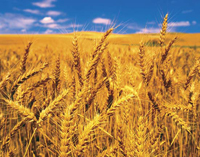Russia may prevent global food crisis
Today grain supplies are volatile. However, fundamental demand increases will likely be met by countries with highly fertile but under-utilised land. Russia, Ukraine and Kazakhstan top the list of beneficiaries of this changing landscape.

In 1992 Russia had 120m hectares of farmland under cultivation. The change from public to private ownership ensured that one of the few advantages of communal ownership - access to plant and equipment - was lost.
Multiple ownership resulted in a "free rider" dilemma for the new owners of land ie, the efforts of individual contributions are shared equally. Consequently, in the last 15 years, some 40m hectares of rich farmland have lain fallow. And what is farmed is low yielding. Russia grows some two tons of wheat per hectare when it has the potential to produce five tons of wheat per hectare.
The ramifications are significant. From 75m tons of cereal output in 2007, Russia could multiply its grain output several-fold simply by enhancing yield management and bringing fallow land back into production. It could produce some 300m tons of cereals without the necessity of producing on virgin land.
This requires long-term planning and investment. Transferring ownership from inefficient multiple parties with no access to capital to large-scale corporate entities with long-term funding is time-consuming, while repairing fallow land is expensive. To attain higher yields needs lengthy investment in crop rotation. Overall the process can take 4-6 years.
These changes will help restore supply and demand imbalances across key cereal markets. That said, the entrepreneurial zeal transforming the Russian agricultural landscape will only restore some equilibrium to a dynamic market. So, while wheat at $12 a bushel might prove to have been a temporary blip, $4.50 a bushel is unlikely to be seen any time soon - even if it rains again in Australia one day.
Source: Financial Times
Subscribe to Pravda.Ru Telegram channel, Facebook, RSS!





